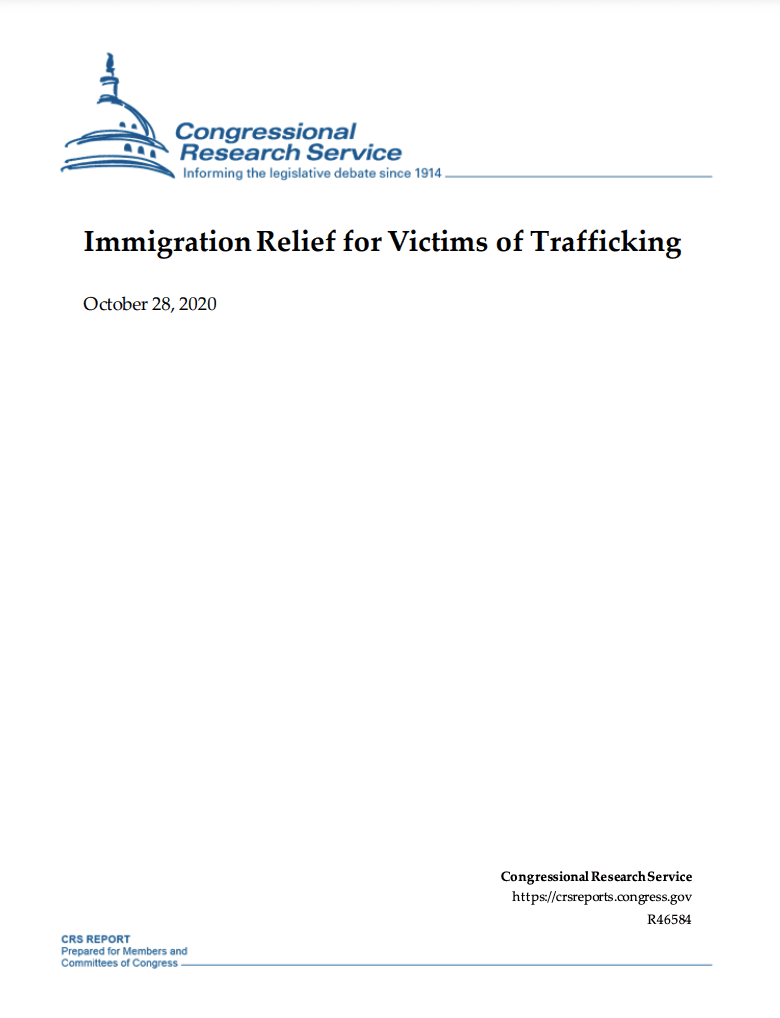
Immigration Relief for Victims of Trafficking
Immigration Relief for Victims of Trafficking
Human trafficking occurs throughout the United States, and traffickers exploit vulnerable individuals for commercial sex and forced labor in a variety of legal and illegal industries. Trafficking victims include both U.S. citizens and noncitizens (referred to as aliens in immigration law), and some of the noncitizen victims are unauthorized immigrants. However, under federal law there are certain protections from removal (deportation) that are available to eligible noncitizen victims of trafficking.
- T Nonimmigrant Status. The Victims of Trafficking and Violence Protection Act of 2000 (TVPA; P.L. 106-386, as amended) created a new nonimmigrant category, known as T status or T-visa, for aliens who are victims of severe forms of trafficking in persons. The T status protects eligible aliens from removal and provides a path to permanent residency. The number of T status recipients is limited to 5,000 principal aliens each fiscal year.
- U Nonimmigrant Status. The Violence Against Women Act of 2000, Division B of the TVPA, created the U nonimmigrant status or U-visa for noncitizen victims who have suffered physical or mental abuse as a result of a qualifying crime, include human trafficking. The U status also protects eligible aliens from removal and provides a path to permanent residency. The number of U status recipients is limited to 10,000 principal aliens per fiscal year. The number of aliens granted U status because of trafficking is not publicly available.
- Continued Presence. Continued presence is not an immigration status but it can offer protection from removal. The TVPA gave the Secretary of Homeland Security the authority to grant continued presence for trafficking victims and prescribed some circumstances under which it can be utilized. The mechanisms for continued presence may include parole, voluntary departure, stay of final removal orders, or any other authorized form of continued presence in the United States, including adjustment to an applicable nonimmigrant status.
Of note, comprehensive data on the prevalence of human trafficking in the United States are not available. Similarly, the number of noncitizen victims of trafficking, including the number of victims who may be eligible for immigration relief, is unknown. However, when legislating on and conducting oversight of the federal government’s use of the T status and U status for trafficking victims, policymakers may consider a number of issues:
- The extent to which the T status is utilized. The 5,000 principal status cap has not been met in any of the most recent 10 fiscal years for which data are available. Policymakers may look at factors that potentially contribute to what some observers consider to be underutilization of the status. They may also consider whether the 5,000 cap is still the appropriate level.
- High demand for the U status. The 10,000 principal alien annual cap has resulted in a backlog of applicants awaiting decisions. Policymakers may examine how this backlog may affect vulnerable individuals such as trafficking victims.
Read more here.
